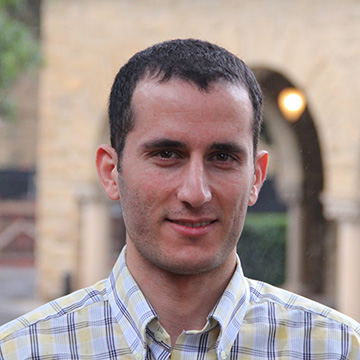
Mahdi Esmaily Moghadam
Biography
Dr. Esmaily joined the Mechanical and Aerospace Engineering faculty in January 2018. He received his Ph.D. from UCSD, where he developed computational methods for surgical design in pediatric cardiology, focusing on improving surgical interventions for single ventricle heart patients, a population with a high mortality rate and complex physiology. He recently proposed a novel surgical design that could potentially avoid the dangerous physiology of current surgical methods and reduce the number of open-heart surgeries. After completing his Ph.D., he moved to the Center for Turbulence Research that is jointly operated by Stanford University and NASA, Ames. In a joint effort with a large group of researchers in Predictive Science Academic Alliance Program, he studied the effect of radiation on particle-laden turbulent flow. Over the years, he has developed a finite-element solver, a direct numerical solver, and a parallel sparse linear solver that are used as a replacement for commercial packages in several academic labs and industry.
Research Interests
Dr. Esmaily's research interest's center around the study of emerging applications in cardiovascular mechanics and biological flows and, development of computational techniques for such problems. Cardiovascular disease is the leading cause of death in the United States with a projected cost of a trillion dollars by 2030, underscoring the importance of innovative solutions in this field. Capturing the complex interaction between fluids and solids is a milestone toward accurate modeling of the cardiovascular system, leading to an emerging area of research in computational mechanics. The overarching goal of Dr. Esmaily's lab is to build high-fidelity predictive tools that can be applied to the study of cardiovascular diseases and contribute toward improving current treatment methods and surgical techniques. Within this scope, two areas of interest are simulation and optimization of an artificial heart and the multi-scale modeling of red blood cells. The outcomes of these studies have the potential to reduce the risk of cardiac failure, arterial fibrillation, coronary occlusion, and stroke among others.
Teaching Interests
Fluid dynamics, Numerical methods, Finite-element methods for fluids, Applied mathematics.
Selected Publications
- Esmaily, Mahdi, Ali Mani. 2016. "Analysis of the clustering of inertial particles in turbulent flows." Physical Review Fluids 1:084202.
- Esmaily, Mahdi, T-Y. Hsia, A. Marsden. 2015. "The Assisted Bidirectional Glenn: a novel surgical approach for first stage single ventricle heart palliation." The Journal of Thoracic and Cardiovascular Surgery 149 (3): 699-705.
- Esmaily, Mahdi, Y. Bazilevs, A. Marsden. 2015. "A bi-partitioned iterative algorithm for solving linear systems arising from incompressible flow problems." Computer Methods in Applied Mechanics and Engineering 286 (1): 40-62.
- Esmaily, Mahdi, I. Vignon-Clementel, R. Figliola, A. Marsden. 2013. "A modular numerical method for implicit 0D/3D coupling in cardiovascular finite element simulations." Journal of Computational Physics 224: 63-79.
- Esmaily, Mahdi, F. Migliavacca, I. Vignon-Clementel, T-Y. Hsia, A. Marsden. 2012. "Optimization of shunt placement for the Norwood surgery using multi-domain modeling." Journal of Biomedical Engineering 134 (5): 051002.
Selected Awards and Honors
- Postdoctoral fellowship, Center for Turbulence Research, Stanford University 2014
- Outstanding Graduate Student award from MAE department, UCSD 2014
- Kaplan fellowship awarded to students with highly distinguished academic record, UCSD 2013
- Best B.Sc. Thesis award from the Iranian Society of Mechanical Engineering, SUT 2008

